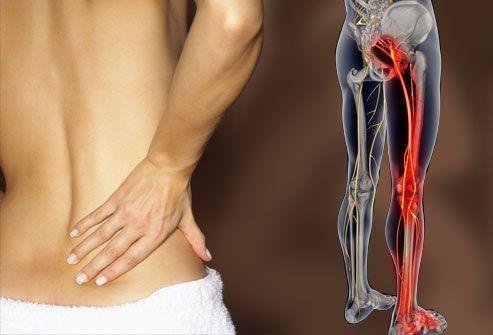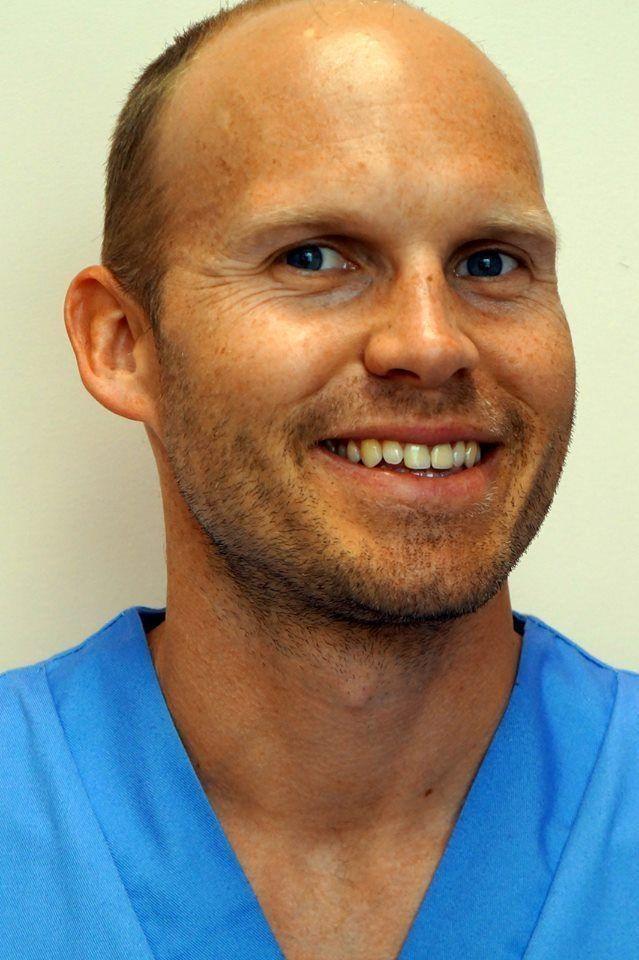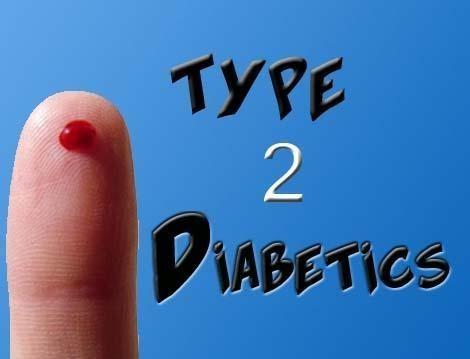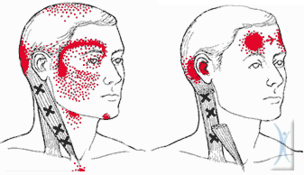
Health advice from our experts - SCIATICA
My sciatica isn’t getting better!
After weeks or months with painkillers and anti-inflammatory treatment the pain is still there.
It’s important to have a correct diagnosis to be able to assess the problem correctly. That is where most treatments fail before even starting.
If you are suffering from pain that doesn’t go past the back of your knee (gluteus and hamstring pain) or pain on the front of the thigh, it’s more than likely that you haven’t got sciatica symptoms but are suffering from some other disorders that are mentioned further down. In most cases these symptoms have a very simple solution with osteopathic treatment and patients recover very well.
Sciatica is a series of symptoms (lower back, gluteus and leg pain, numbness or tingling, weakness…) and not an actual diagnosis, that can be caused by a series of different things. What most people understand is that there is a compression of the sciatic nerve caused by the inflammation generated by a prolapsed or herniated intervertebral disc that irritates the nerve and therefore causes pain. In this case medication is necessary to help reduce the inflammation and a correct osteopathic treatment is needed to improve the situation and prevent it from returning.
But there are many other things that can cause sciatica-type pain:
- There are muscles that can compress the sciatic nerve.
- Many muscles themselves can give pain around the lower back all the way down to the ankle or even on the front of the thigh and knee.
- Certain ligaments and joints can also refer pain around the lower back and down the back of the leg.
- Osteoarthritis of the lower back can also have an effect that is similar to that of a herniated intervertebral disc.
In cases like these anti-inflammatory treatment and painkillers aren’t a solution because they don’t treat the problem, they cover up the symptoms which can then return later on. That’s why treating the source of the pain helps you recover from the disorder.

There are various treatments that can help improve or cure these problems such as:
- Osteopathic manipulations to unblock certain vertebrae that may be rotated or lacking movement
- Osteopathic manipulations to unblock and improve the mobility of the sacroiliac joints or the sacrum which have a big influence on the sciatic nerve
- Treatment of muscle trigger points using manual treatment such as pressure, stretching , massage.
- Treatment of muscle trigger points applying dry needling with acupuncture needles or electro-acupuncture.
- Neuromeningeal manipulation to restore mobility to the nerve therefore improving its functionality .
- Cranial-sacral therapy to help restore the meninges (layers of membranes that envelope the central nervous system).
All these treatments are very effective but only work if there is a correct diagnosis of the disorder. It is important to visit your doctor and your osteopath to evaluate and make a correct diagnosis.
This article was provided by Simon Ratcliffe, Osteopath, Family Medical Centre
More Health advice here and Like us on Facebook

DIFFERENCE BETWEEN A PHYSIOTHERAPIST
DO YOU KNOW THE DIFFERENCE BETWEEN A PHYSIOTHERAPIST AND AN OSTEOPATH?
My name is Simon Ratcliffe and I am a licensed Physiotherapist and Certified Osteopath C.O.

I began my Physiotherapy journey at the Miguel Hernández University in San Juan in 2004 and finished in 2008. During this time I learned all different types of applications this career can offer, from paediatric, respiratory, sports physiotherapy, etc. When I finished Physiotherapy in 2008 I then decided I was interested in treating pain disorders.
These vary from lower back or neck trouble, to nerve pain or even joint issues such as shoulder or knee problems. I soon realized that what I had learned during my university years wasn’t enough to treat these types of disorders, thus embarked on a mission to improve my skills and knowledge regarding these situations. I began to take various speciality courses that included things like dry needling therapy or neurodynamic treatment.
These where excellent tools for certain treatments but I needed something to help develop a correct diagnosis.
That’s when osteopathy came into the picture. In 2009 I embarked on a 5 year course in Osteopathy. I specialized in this discipline at the Madrid School of Osteopathy which was really an eye opener! I couldn’t have imagined the amount of things that can influence the anatomy of the human body and how complex it was. During this spell I learned structural Osteopathy, cranial Osteopathy and visceral Osteopathy; all of these are different treatments but are linked together to create a complete diagnosis and treatment guide.
Over the years I have seen many different cases and thankfully been able to treat and cure many disorders due to the unique blend of physiotherapy and osteopathic treatments that I can combine. I will give an example of how my treatments have evolved over the years, especially since starting osteopathy:
In the case of a person with lower back pain or even sciatica, my treatments use to consist of only treating the affected area with trigger point treatment and maybe some home stretching exercises. The patient would improve but their pain would either come back or not fully go away. I now combine several osteopathic tests that indicate any vertebral blockage that may be present, and also think of the person as a whole and not just think of the area that is painful. In some lower back problems the cause can be because of a foot problem, in others a shorter leg may be the cause, or even an intestinal or gynaecological issue is the reason for their lower back pain.
This is only a simple example of some of the things that I examine and look for when I am with a patient.
Simon Ratcliffe Physiotherapist and Certified Osteopath C.O.
If you need Health Assistance while in Benidorm, try here.
Like us on Facebook

Type 2 Diabetes - Advice from the Family Medical Centre, Albir
There are estimated to be millions of people with undiagnosed Diabetes, are you one of them?
Diabetes is a lifelong condition that causes a person’s blood sugar level to become too high.
There are two main types of diabetes – type 1 and type 2.

Type 2 diabetes occurs when the pancreas doesn’t produce enough insulin to maintain a normal blood glucose level, or the body is unable to use the insulin that is produced.
The pancreas (a large gland behind the stomach) produces the hormone insulin, which moves glucose from your blood into your cells where it is converted into energy.
Symptoms
The main symptoms of type 1 and type 2 diabetes are very similar
The high blood sugar levels makes you:
- Feel thirsty
- Pass urine more often particularly at night
- Feel tired all the time
- Have unexplained weight loss
- Have cuts or wounds that heal slowly
- Have Itching around the penis or vagina, or frequent bouts of thrush
- Have blurred vision which is caused by the lens becoming dry
The signs and symptoms of type 2 diabetes are often mild and develop over a number of years and are therefore not as obvious. It is often diagnosed during a routine check-up. Untreated diabetes can damage your organs, so it’s important that it is diagnosed as early as possible.
Risk factors
Four of the main risk factors for developing type 2 diabetes are:
- Age - being over 40. This may be because people tend to weigh more and exercise less as they get older.
- Genetics – having a close relative with the condition (parent, brother or sister)
- Weight – being overweight or obese. In particular, fat around the abdomen increases your risk. This is because it releases chemicals that can upset the body’s cardiovascular and metabolic systems.
- Ethnicity – being of south Asian, Chinese, African-Caribbean or black African origin (even if born in Europe)
Other risks
Your risk of developing type 2 diabetes is also increased if your blood glucose level is higher than normal, but not yet high enough to be diagnosed with diabetes.
This is sometimes called “pre-diabetes” or impaired fasting glycaemia (IFG) or impaired glucose tolerance (IGT).
If you are concerned that you might be at risk a simple blood test can check your blood sugar and relieve your mind.
Find more health Care tips here or Join our Facebook Group

Vitamin B12 Deficiency
How to detect Vitamin B12 deficiency
Do you suffer with any of the following:
- Diarrhoea or constipation
- Fatigue, lack of energy, or light-headedness when standing up or with exertion
- Loss of appetite
- Pale skin
- Problems concentrating
- Shortness of breath
- Swollen, red tongue or bleeding gums
- Confusion or change in mental status
- Depression
- Loss of balance
- Numbness and tingling of hands and feet
……………then you may be suffering from Vitamin B12 deficiency.
Vitamin B12 deficiency can occur at any age but is more common in older people. It is also more prevalent in vegetarians (and especially vegans) and those using long term treatments for heartburn.
Vitamin B12 plays an essential role in the production of red blood cells. Red blood cells provide the body tissues with oxygen.

Vitamin B12 is found in meat, poultry, shellfish, eggs, and dairy products and in lesser amounts in other foods. A person who has a normal healthy diet which includes plenty of these foods should have normal levels of vitamin B12. However, there are certain medical conditions that make it difficult for the body to absorb B12. These include:
- Crohn´s disease.
- Coeliac disease.
- Fish tapeworm infection.
- Any condition that makes it difficult for your body to digest foods
- Pernicious anaemia.
- Any surgery that involves removing certain parts of the stomach or small intestine.
Diagnosis is made with a simple blood test and treatment is effective and easy. This may be in tablet form or (depending on the cause) monthly injections.
As a person gets older they tend to put symptoms such as tiredness down to ‘old age’. However, for 1 out of 10 the symptoms are just due to a simple B12 deficiency which can be easily corrected.
For anyone suffering from the above mentioned symptoms a visit to your Family Doctor may turn out to be the best thing you’ve ever done!
Join our Facebook Group
More Information and Health advice can be found here

Headaches and osteopathy
It is possible to get relief from headaches without having to take medication!! There are many different causes for headaches that range from muscular, vascular, psychological, emotional, etc. The most important thing is verifying what the cause of your headache is, and whether it may benefit from osteopathic treatment.
In osteopathy, we focus on treating headaches that have a cervical and cranial origin. This is because we know that this region is the key to treating the cranial blood flow that enters and exits the head. This region also has a direct relation with muscles that are in charge of moving our head and keeping it still and stable when necessary. Simplifying all this, we basically find three major causes in our day to day clinical experience.
In first place, if we find you have a pulsating pain, this could be a vascular type headache. In this case it is extremely important to verify that the orifices where the arteries enter and the veins exit the head, are completely free of any compression, allowing a correct entry and exit of blood. If for example we find a blockage of the jugular orifice, this means that blood is having difficulty exiting the head, which will cause a congestive headache due to the pressure caused by the blood that enters the head freely but cannot leave the cranium without difficulty.
As a second possible cause, we find that there are also several nerves that can cause headaches in the occipital area (back of the head). These nerves emerge from the first few vertebrae, which can be affected by the contraction of the muscles at the base of the cranium. These nerves can also be irritated where they originate, if we find a blockage or lack of movement of these vertebrae, this will add difficulty to the correct functionality of these nerves causing headache pain.
Our last major cause is muscular, specially the muscles that control head movement and stability of this region. These muscles can directly cause pain of any part of the neck, head and facial area. This occurs due to many complex nervous relations, between the nerves that are in charge of controlling these muscles, and the nerves that pick up the sensitivity of the cranial region. There are many trigger point pain maps that show the areas of referred pain from these muscles, as an example, we include some images in this article to give you an idea of where some muscles can give pain.


These examples are only a few of many causes of headaches and migraines, but are also common and react very well to osteopathic treatment.
With our questions, exploration and tests we verify what type of headache is affecting the patient, and follow up with the correct osteopathic treatment


